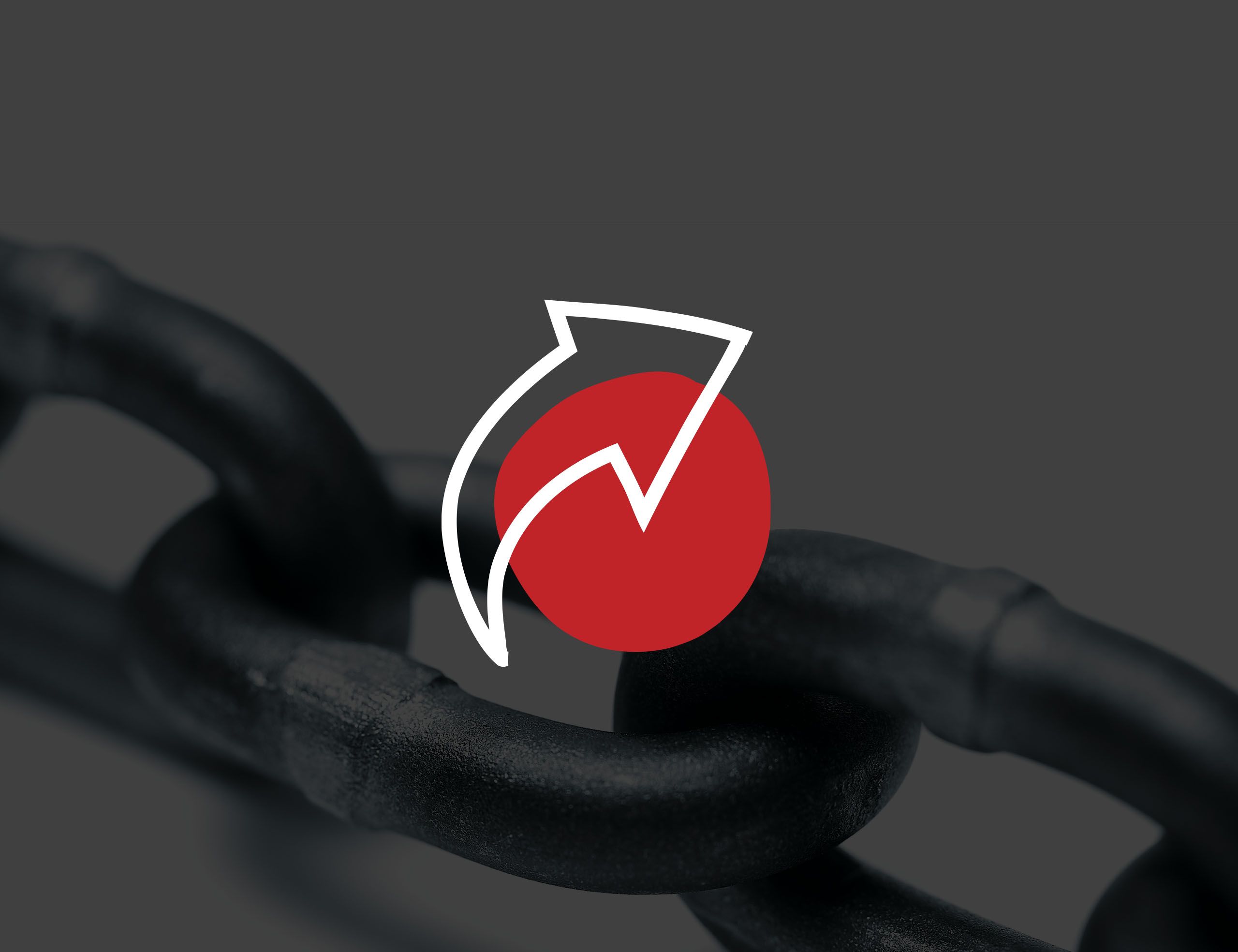
Frustrated by your website constantly languishing at the bottom of search engine results? Have you tried improving your backlinks to improve your online presence and surpass your competitors? Backlinks are an essential aspect of search engine optimization (SEO). Yet, they’re often overlooked.
Acquiring backlinks for your eCommerce site demands time and effort, but the rewards are substantial. Quality backlinks can catapult your ranking above industry giants like Amazon and eBay. Why? Because backlinks serve as ‘votes of confidence’ from other websites, indicating to search engines that the content is reliable and valuable. They’re among the factors Google considers when assessing whether the content showcases expertise, authority, and trustworthiness, as demonstrated by other prominent websites linking or referring to it.
Implementing a robust backlinking strategy is crucial for scaling your eCommerce presence. Whether you’re new to backlinks or seeking to refine your SEO strategy, our guide offers practical tips and insights to supercharge your link-building efforts.
Join us as we explore the challenges of acquiring backlinks and unveil strategies to propel your eCommerce store to success.
Need expert guidance? Contact us at InteractOne for personalized support.
- The Basics: Understanding Backlinks and Their Importance
- Create High-Quality, Link-Worthy Content for Link-Earning
- Harnessing Guest Blogging Opportunities to Build Links
- Using Visual Content to Gain Backlinks
- Establishing Relationships with Influencers to Earn Links
- Effective Outreach Techniques for eCommerce Merchants to Build Links
- Ready to Start Your New Link Building Campaign?
The Basics: Understanding Backlinks and Their Importance
What is a backlink, and why does it matter for SEO?
A backlink is essentially a hyperlink from one website to another, acting as a reference or citation. Search engines like Google use these links to judge how important a web page is. The number, quality, and relevance of these backlinks are significant for a webpage’s position in search results.What role do backlinks play in driving organic traffic and improving search engine rankings?
Backlinks are crucial in SEO, indicating a website’s credibility, relevance, and authority. By prioritizing high-quality backlinks from trusted sources, eCommerce merchants can boost their search engine rankings and build a strong online presence.How does Google assess backlink quality?
Google uses different factors in its algorithms to assess backlink quality, such as relevance, authority, and overall quality. Understanding and aligning with these factors is crucial to maximizing your backlinking efforts.- Relevance: Google evaluates if the content and linking sites are relevant to yours. Links from similar industry sites matter more than generic, unrelated ones.
- Authority: Backlinks from reputable sites show Google your content is valuable. Factors like domain authority and search rankings determine a site’s trustworthiness.
- Overall Quality: Google values the quality, not just the quantity, of backlinks. Genuine mentions in articles, guest posts, and high-quality placements are more valuable than manipulated links. Google considers user engagement, content quality, and website structure to assess a backlink’s overall quality.
What backlink metrics should merchants analyze?
When analyzing backlink performance, merchants should focus on key metrics that provide insights into the quality, relevance, and impact of acquired backlinks. These metrics include:- Domain Authority: This shows how trustworthy the websites linking to yours are. Higher domain authority means more potent and influential backlinks.
- Anchor Text Diversity: This tells you if your backlinks look natural and varied. Having a mix of anchor text signals relevance and authenticity to search engines.
- Referral Traffic: This shows how many people visit your website from the backlinks. More referral traffic means your backlinks are working well to bring visitors to your site.
What are the risks of relying solely on a single source for backlinks in eCommerce?
Depending only on one source means fewer diverse websites linking to yours. This can damage your visibility and authority. Here’s why:- Overdependence on a Single Source: Relying too heavily on one source exposes your site to changes in its performance. If that website loses authority or gets penalized, it can hurt your site too.
- Potential for Link Manipulation: Depending on a single source may seem unnatural to search engines, leading to potential penalties.
- Limited Exposure and Audience Reach: Getting backlinks from different websites helps more people find your site. If you only get backlinks from one place, you’re limiting growth and brand recognition opportunities.
- Lack of Diversity: Search engines like Google prefer high-quality backlinks from many different sites because it shows your website is trusted by a variety of sources.
How can merchants diversify backlink sources effectively?
Merchants can diversify their backlink sources by:- Getting links from related websites
- Using relevant anchor text
- Acquiring backlinks from different domains through guest posting and collaborations
- Targeting industry-specific blogs
- Joining forums
- Being active on social media
- Using other relevant channels
How do diversified backlinks improve domain authority and resilience to algorithm changes?
Diversified backlinks, stemming from various sources and types, are crucial for enhancing domain authority in SEO. By incorporating links from diverse domains, content types, and anchor text, your website signals its relevance and authority to search engines across multiple contexts. This diversity not only boosts your domain authority but also makes your site more resilient to algorithm changes, equipping you to weather any shifts in search engine algorithms and ensuring sustained visibility and rankings in search results.Why is aligning backlinking efforts with Google’s guidelines important?
Aligning backlinking efforts with Google’s guidelines is crucial for several reasons. First and foremost, Google is the dominant search engine, accounting for the majority of web searches worldwide. Following their guidelines ensures that your website avoids penalties or getting demoted in search rankings, which can severely impact your online visibility and traffic. Additionally, adhering to Google’s guidelines fosters trust with both users and other websites. It signifies that your website operates ethically and provides valuable content, which can attract more organic backlinks naturally. Moreover, maintaining compliance with Google’s standards helps future-proof your SEO strategy, reducing the risk of sudden drops in rankings due to algorithm updates. Overall, aligning with Google’s guidelines not only preserves your website’s integrity and reputation but also enhances its long-term sustainability and success in search engine results.
Create High-Quality, Link-Worthy Content for Link-Earning
Link building and link earning are two distinct approaches to acquiring backlinks. Link building – an aspect of external content marketing, PR, and B2B relationships – involves actively seeking links through strategies like guest posting. The goal is to get as many links as possible, but it can be risky if done unethically, such as buying links. On the other hand, link earning is integral to internal content marketing strategy. It adopts an organic approach by creating really good content that other websites want to link to naturally. The focus is on making genuinely content that people like and share on their own. This way is typically safer and helps build trust with search engines. Both methods aim to make your website more visible, but they go about it in different ways.High-quality vs low-quality links: what’s the difference?
Distinguishing between high-quality and low-quality backlinks is pivotal for a successful link-building strategy. High-quality backlinks originate from trusted sources, bolstering site authority and credibility. Conversely, low-quality backlinks, often originating from spammy or irrelevant sites, can harm SEO performance.How can eCommerce merchants create content that attracts backlinks?
Creating content that appeals to eCommerce audiences is key to getting backlinks. By making valuable and engaging content that suits the interests and needs of their audience, merchants can improve their chances of getting backlinks from trusted sources.What types of content are most effective for acquiring backlinks?
Product guides, reviews, tutorials, and industry insights are especially valuable for naturally getting backlinks. The important thing is to show expertise, offer unique insights, and provide real value to potential linkers. By focusing on content that educates, informs, or entertains their audience, eCommerce merchants can establish themselves as authoritative voices in their field, attracting quality backlinks in the process.Harnessing Guest Blogging Opportunities to Build Links
What are the benefits of guest blogging for eCommerce merchants?
Guest blogging offers numerous advantages for eCommerce merchants aiming to strengthen their backlink profile. By writing for relevant and respected blogs in their industry, merchants can broaden their audience, boost brand visibility, and position themselves as authoritative figures in their field. Additionally, guest blogging provides opportunities to attract targeted traffic to their eCommerce store, improve brand credibility, and build valuable connections with other influencers and thought leaders.How can merchants identify reputable blogs for guest posting opportunities?
Merchants should conduct thorough research within their niche to find reputable blogs for guest posting opportunities. They can utilize industry-specific directories, analyze competitor backlinks, and engage with relevant communities and forums. Additionally, merchants should assess metrics such as domain authority, audience engagement, and content relevance to pinpoint suitable blogs aligning with their target audience and goals. It’s essential to look for blogs with a strong readership, active engagement, and a history of publishing high-quality content. Tools like BuzzSumo or SEMrush can aid in discovering popular blogs within the niche.What strategies can be used to craft compelling guest posts?
To craft compelling guest posts, merchants should focus on delivering value and engaging the target audience strategically. This involves offering unique insights, actionable advice, or practical solutions to common challenges within their niche. Adhering to the guidelines and preferences of the target blog, maintaining a conversational tone, and providing well-researched and authoritative content are crucial for maximizing the impact of guest blogging efforts. By employing these strategies, eCommerce merchants can leverage guest blogging to build high-quality backlinks and drive meaningful engagement with their target audience.Using Visual Content to Gain Backlinks
Backlinks aren’t limited to text links; they can also come from images, infographics, and videos. These visuals can actively link back to your website and engage users.What is visual content for eCommerce marketing?
Visual content in eCommerce marketing includes images, videos, and interactive elements used strategically to enhance product understanding, influence purchase decisions, and create engaging experiences for online shoppers. It encompasses various formats such as high-quality product images, demo videos, augmented reality (AR), and user-generated content (UGC). Overall, visual content is a powerful tool that improves user experience, drives conversions, and sets brands apart in the competitive online landscape.Why is visual content important in eCommerce marketing?
Visual content is crucial in eCommerce marketing because it captivates and engages audiences. Compelling images, videos, and infographics are vital in the visually-driven online landscape, as they capture attention, convey product information, and influence purchasing decisions. Visual content enhances the user experience, increases product visibility, and fosters greater brand recall and recognition. Additionally, visual elements drive higher engagement and conversion rates, making them essential for eCommerce merchants aiming to stand out in a crowded digital marketplace.What strategies can merchants use to create engaging visual content?
Center your efforts on crafting engaging visual content that suits your audience. Create product infographics, captivating videos, and helpful visual guides. Ensure your content is easily shareable by integrating social sharing buttons and embedding codes. Incorporate your website URL or branding into visuals to secure backlinks when shared externally. Utilize visual platforms like Pinterest to exhibit your content and interact with users. Active engagement on platforms such as Pinterest can boost the visibility of your visual content and prompt others to link back to it on their websites or blogs.Establishing Relationships with Influencers to Earn Links
Sarah, an eCommerce jeweler, seeks to boost her brand’s visibility. She reaches out to fashion influencers, offering free jewelry samples in exchange for collaboration. Influencers create engaging content showcasing Sarah’s jewelry, driving traffic to her store and improving her search rankings. Through strategic influencer partnerships, Sarah establishes her brand authority and achieves eCommerce success.What impact does influencer marketing have on eCommerce backlinking?
Influencer marketing is a powerful strategy for eCommerce, allowing merchants to earn valuable backlinks and boost their online presence. Collaborating with influencers enables merchants to tap into their established networks, reach new audiences, and garner authentic endorsements for their products or services. Influencers often possess significant authority and credibility within their respective niches, making their endorsements highly influential in driving traffic and generating backlinks to eCommerce websites. Merchants should conduct thorough research to find influencers aligned with their brand objectives and demographics, then approach them with personalized outreach emphasizing mutual benefits and understanding of the influencer’s audience and interests. For comprehensive guidance on leveraging influencer marketing and other strategies to maximize eCommerce backlinking efforts, explore our in-depth guide on User-Generated Content (UGC). This invaluable resource provides merchants with actionable tips, best practices, and case studies to harness the power of UGC and drive meaningful engagement, conversions, and backlinks for their eCommerce stores.Our team of experts is dedicated to helping eCommerce merchants navigate the complexities of online marketing and achieve their business goals.
Effective Outreach Techniques for eCommerce Merchants to Build Links
What outreach strategies are effective for eCommerce businesses?
Tailor Outreach Efforts
Customize outreach efforts to match the preferences and interests of potential link partners. This personalized approach improves the chances of securing valuable collaborations and backlink opportunities.Demonstrate Genuine Interest
Show genuine interest in the content, audience, and objectives of potential partners to establish a rapport. Authentic engagement lays the foundation for a fruitful relationship.Craft Persuasive Emails
Write persuasive and concise outreach emails. Highlight mutual benefits, relevant metrics, testimonials, or case studies to enhance credibility and increase the likelihood of securing backlinks.Prioritize Genuine Relationships
Focus on building genuine relationships, not just transactions. Authentic connections pave the way for long-term partnerships, essential for eCommerce growth and sustainability in the competitive online landscape.How to Monitor and Improve Your Backlink Performance
Why is it essential to analyze competitor backlink profiles?
Analyzing competitor backlink profiles is instrumental in understanding the competition and finding ways to improve. By looking at what competitors are doing, merchants can pinpoint potential gaps in their own approach, find new chances to get backlinks, and benchmark their performance against industry peers. This analysis also helps merchants tweak and improve their own backlink strategies, improving their SEO and keeping them competitive.What tools and techniques can merchants use for backlink analysis?
Merchants can utilize tools like Ahrefs, Moz, SEMrush, and Majestic to monitor their backlinks and SEO. These platforms offer robust features for exploring backlink profiles, tracking changes over time, and assessing their quality and relevance. Additionally, they provide insights into competitor backlink profiles, top-performing content, and effective link-building strategies. Google Search Console is another valuable tool that reveals backlinks discovered by Google, including linking domains and linked pages. These tools can also aid in content gap analysis, identifying topics or keywords where competitors have backlinks but merchants don’t, creating opportunities for content creation and link acquisition.How can merchants capitalize on opportunities from competitor backlinks?
Start by looking at what your competitors are doing right and copying their successful strategies. See what kinds of websites link to their content, what anchor text they’re using in their links, and how those links fit into the overall context. Then, use this info to reach out to similar websites and offer your own content for potential backlinks. Also, try to make your content even better than your competitors. Find areas where you can add more information or give a different perspective to get more backlinks. By offering something better, you can beat your competitors in terms of the quality and importance of your backlinks, which will strengthen your online presence.How can merchants iterate and refine backlink acquisition strategies based on performance data?
Merchants can improve their backlink strategies by closely monitoring performance data. This means watching important numbers over time to see what’s working and what needs to change. With this info, merchants can adjust who they target, how they reach out, and which websites they focus on to get better results. By constantly updating and improving their approach using performance data, merchants can make their backlink efforts more effective and improve their SEO performance.
Ready to Start Your New Link Building Campaign?
Expert backlinking strategies offer eCommerce merchants invaluable opportunities to enhance their SEO, authority, and online visibility. By implementing these proven tactics, merchants can position themselves for long-term success in the competitive digital landscape. Key Takeaways:- Customize outreach efforts and content to meet the needs of target link partners.
- Use various content formats, like visuals and guest blogging, to attract top-notch backlinks.
- Keep track of backlink performance with tools such as Ahrefs, Moz, and Google Search Console.
- Adjust backlink strategies based on performance data to improve results over time.
Grow Your Backlink Profile Today
At InteractOne, we specialize in creating successful digital marketing strategies that include quality backlink strategies. Our team of experts is dedicated to helping eCommerce merchants navigate the complexities of online marketing and achieve their business goals. Whether you’re looking to enhance your backlink profile, improve SEO performance, or boost online visibility, we’re here to support you every step of the way. Ready to take your eCommerce store to new heights? Contact InteractOne today to discover how we can tailor a digital marketing strategy with effective backlinking techniques. Together, let’s build a robust online presence and drive sustainable growth for your eCommerce business.Drop Us a Line At:
Or, if you prefer an old-fashioned phone call:
Phone (USA): (513) 469-3362
Proudly headquartered in Cincinnati, Ohio

